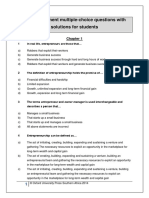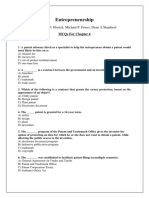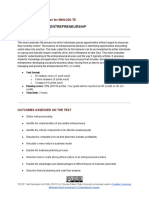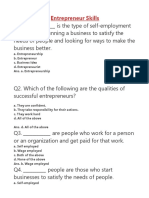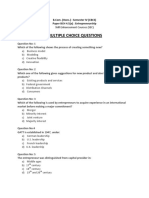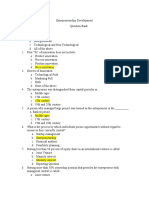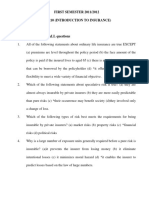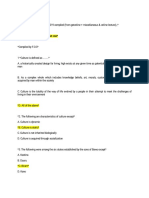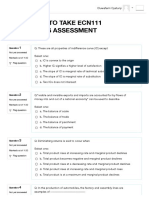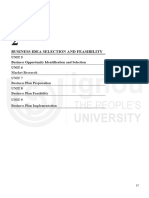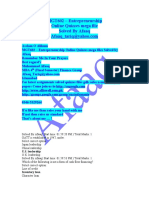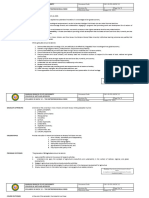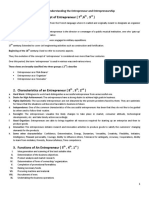100% found this document useful (3 votes)
11K views10 pagesMULTIPLE CHOICE QUESTIONS Marketing
This document contains 30 multiple choice questions about topics related to entrepreneurship and business management. The questions cover concepts such as innovation, new product development, business models, distribution channels, joint ventures, mergers and acquisitions, entrepreneurial characteristics, and risks and challenges of starting a new business.
Uploaded by
Daniel AdegboyeCopyright
© © All Rights Reserved
We take content rights seriously. If you suspect this is your content, claim it here.
Available Formats
Download as DOCX, PDF, TXT or read online on Scribd
100% found this document useful (3 votes)
11K views10 pagesMULTIPLE CHOICE QUESTIONS Marketing
This document contains 30 multiple choice questions about topics related to entrepreneurship and business management. The questions cover concepts such as innovation, new product development, business models, distribution channels, joint ventures, mergers and acquisitions, entrepreneurial characteristics, and risks and challenges of starting a new business.
Uploaded by
Daniel AdegboyeCopyright
© © All Rights Reserved
We take content rights seriously. If you suspect this is your content, claim it here.
Available Formats
Download as DOCX, PDF, TXT or read online on Scribd
/ 10
















